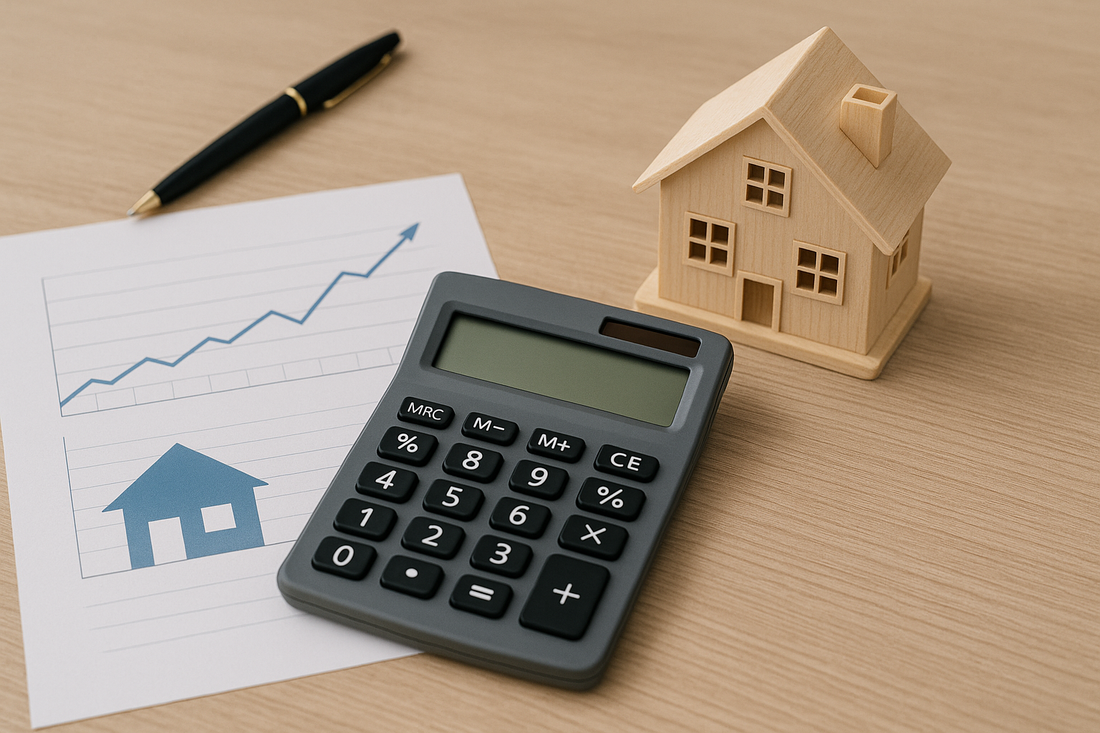How to Calculate and Increase NOI in real estate

NOI is the backbone of real estate analysis! If you’re jumping into real estate, it’s must to not only understand how to calculate it but also improve so you can add value and increase the value of your investment! So in this article, we’ll show you how to calculate and improve NOI so you can be a solid investor!
What is NOI?
NOI, or Net Operating Income, is the heartbeat of your real estate investment's financial health. Simply put, it's the money your property makes after you've paid all the necessary operating expenses, but before you factor in taxes, debt service, or capital expenditures. Think of it as your property's report card – a quick glance tells you how well it's performing and whether it's living up to its potential. For savvy investors, NOI isn't just a number; it's a powerful tool for evaluating properties, making informed decisions, and ultimately, maximizing returns.
Is NOI Monthly or Yearly?
NOI is typically calculated on an annual basis. However, some investors and property managers also track it monthly to keep a closer eye on their property's performance and spot trends more quickly.
How to Calculate NOI
Calculating NOI is like baking a cake – you need the right ingredients and a simple recipe.
Here's the formula:
NOI = Gross Operating Income - Operating Expenses Let's break it down:
1. Gross Operating Income: This is all the revenue your property generates. Think rent payments, parking fees, laundry income, vending machine profits – if it's money coming in from the property's operations, it counts.
2. Operating Expenses: These are the costs of running your property day-to-day. We're talking about things like:
- Property management fees
- Maintenance and repairs
- Utilities (if you're paying them)
- Insurance
- Property taxes
- Landscaping
- Cleaning services
Now, here's the kicker: NOI doesn't include your mortgage payments, depreciation, or capital expenditures. It's all about the property's operational performance, not your financing choices or long-term improvements.
Example time!
Let's say you own a small apartment building: Gross Operating Income: $200,000/year Operating Expenses: $80,000/year NOI = $200,000 - $80,000 = $120,000 There you have it! Your property's NOI is $120,000. But remember, this number isn't just trivia – it's a powerful tool for comparing properties, estimating value, and making smart investment decisions. In the next section, we'll explore why NOI matters so much and how you can use it to your advantage.
What is a good NOI in real estate?
Ah, the million-dollar question! (Sometimes literally.) The truth is, there's no one-size-fits-all "good" NOI. It's like asking, "What's a good salary?" – it depends on a lot of factors. That said, investors often look at NOI in relation to the property's value, using a metric called the capitalization rate (or cap rate). A "good" cap rate typically ranges from 4% to 10%, depending on the property type, location, and market conditions. So, if you have a property worth $1,000,000, a "good" NOI might be anywhere from $40,000 to $100,000. But here's the real scoop: what matters most is whether the NOI aligns with your investment goals. Are you after steady cash flow? Looking to add value? Hoping to flip? Your definition of "good" NOI should match your strategy. Remember, a higher NOI is generally better, but context is key. A lower NOI in a prime location with growth potential might be more valuable than a higher NOI in a declining market. It's not just about the number – it's about the story behind it and the opportunities it presents. The bottom line? A good NOI is one that helps you meet your investment objectives while outperforming similar properties in your market. Keep your eye on that prize, and you'll be speaking NOI fluently in no time!
Why is accurate NOI important BEFORE buying a property?
Knowing the accurate NOI before buying a property is like test-driving a car before signing on the dotted line – it's absolutely crucial. Here's why: First, NOI is your crystal ball into the property's true performance. It strips away the smoke and mirrors of clever marketing or optimistic seller projections, giving you the cold, hard facts about the property's earning potential. An accurate NOI helps you avoid the "lipstick on a pig" scenario, where a property looks great on the surface but bleeds money operationally. Second, NOI is the foundation for determining the property's value. Many investors use the capitalization rate method, which directly relates NOI to property value. Get the NOI wrong, and you could end up overpaying by thousands – or even millions – of dollars. It's like building a house on sand; if your NOI calculation is off, everything else in your investment plan becomes shaky. Lastly, an accurate NOI allows you to forecast your potential returns realistically. It helps you decide if the property aligns with your investment goals and if you can afford it in the long run. Remember, enthusiasm doesn't pay the bills – cash flow does. And NOI is your best predictor of future cash flow. In essence, an accurate NOI before purchase is your best defense against nasty surprises and your best offense for negotiating a fair price. It's the difference between making an informed investment and taking a costly leap of faith. So, dig deep, verify every number, and let that NOI guide you to smart, profitable decisions.
NOI vs ROI
While NOI and ROI might sound like cousins at a financial family reunion, they're actually quite different beasts. Let's break it down: NOI (Net Operating Income): • Focuses on the property's performance • Doesn't consider how you financed the deal • Helps compare properties on an operational level ROI (Return on Investment): • Looks at your overall profit as an investor • Takes into account your initial investment and ongoing costs • Gives you a personal view of how well your money is working for you Think of NOI as the property's report card, while ROI is your investment's report card. Both are crucial, but they tell different stories. NOI helps you understand a property's potential, while ROI shows how well you're capitalizing on that potential given your specific situation. In short: Use NOI to evaluate properties, use ROI to evaluate your investment decisions.
How to Improve NOI
Before we dive into the details, here's a quick hit list of some powerful ways to boost your property's NOI:
1. Increase rental income
2. Add value-added services or amenities
3. Reduce operating expenses
4. Improve energy efficiency
5. Optimize your tenant mix Each of these strategies can be a game-changer for your NOI. They're like levers you can pull to fine-tune your property's performance. Some are quick wins, while others might require more time and investment. But all have the potential to significantly impact your bottom line. In the following sections, we'll break down each of these strategies, giving you practical tips and real-world examples to help you implement them effectively. Ready to supercharge your NOI? Let's dive in!
1. Increase rental income:
This is often the most direct route to a higher NOI. Consider market-based rent increases when leases renew. But don't stop there – look for underutilized spaces that could generate income. That basement storage area? It could become premium storage units. That empty rooftop? Maybe it's perfect for solar panels or a rooftop garden rental. Remember, every square foot is an opportunity.
2. Add value-added services or amenities:
Think like a hotel, not just a landlord. What services could you offer that tenants would happily pay for? In residential properties, this might be package acceptance, dog-walking services, or a small gym. For commercial properties, consider offering furnished office options or shared conference rooms. The key is to find amenities that increase the property's appeal while also generating additional income.
3. Reduce operating expenses:
This doesn't mean cutting corners on maintenance (that's a recipe for disaster). Instead, look for smart ways to trim costs. Shop around for better deals on insurance. Consider bulk purchasing supplies if you manage multiple properties. For larger buildings, you might even negotiate better rates with service providers. Every dollar saved on expenses is a dollar added to your NOI.
4. Improve energy efficiency:
This is a win-win – it reduces expenses and appeals to environmentally conscious tenants. Start with low-hanging fruit like LED lighting and programmable thermostats. For bigger impacts, consider upgrades like energy-efficient HVAC systems or improved insulation. Yes, these require upfront investment, but they can lead to significant long-term savings and potentially higher rents.
5. Optimize your tenant mix:
This is especially crucial for commercial properties. The right mix of tenants can create synergies that benefit everyone. For example, a popular restaurant can drive foot traffic to nearby retail shops. In multi-family properties, consider the demographics you're attracting and whether they align with your property's strengths. Sometimes, repositioning your property to attract a different tenant base can lead to higher rents and lower turnover. Remember, improving NOI is an ongoing process, not a one-time event. Keep your finger on the pulse of your property and the market. Be creative, be proactive, and always be looking for that next opportunity to boost your NOI. It's this mindset that separates the good investors from the great ones.
